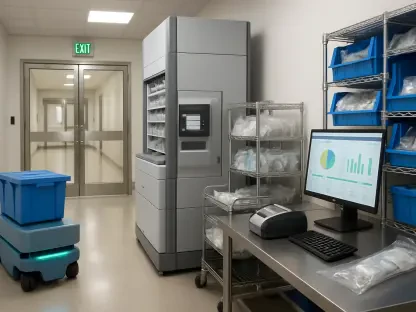I’m thrilled to sit down with James Maitland, a renowned expert in robotics and IoT applications in medicine, whose passion for integrating cutting-edge technology into healthcare has led to groundbreaking innovations. Today, we’re diving into the fascinating world of AI in healthcare, specifically focusing on a new AI ‘superagent’ developed by Oscar Health. Our conversation explores how this tool is transforming patient care and administrative processes, the technology behind it, early feedback, and the exciting future possibilities it holds.
How did the concept of Oscar Health’s AI ‘superagent’ come about, and what specific challenges in healthcare is it designed to address?
The idea for the superagent stemmed from a growing need to streamline complex processes in healthcare. Over the past few years, we’ve seen administrative burdens piling up on care teams, from handling prior authorizations to explaining benefit costs. The goal was to create a tool that could support Oscar’s Care Guides by automating repetitive tasks and providing quick, accurate answers. It’s really about tackling inefficiencies—reducing wait times for patients and freeing up human staff to focus on more personal, empathetic interactions. The superagent targets pain points like navigating insurance details or procedural approvals, which are often time-consuming and error-prone when done manually.
Can you break down how this superagent actually works in a way that’s easy to understand?
Absolutely. At its core, the superagent is like a highly intelligent assistant that pulls together information from various sources to provide clear answers. It uses large language models, or LLMs, to understand and generate human-like responses. These models are layered with systems like internal APIs and targeted information retrieval, which means it can access specific data from Oscar’s databases, cross-check details, and even cite its sources. Imagine asking a question about a procedure’s coverage—it doesn’t just guess; it fetches the exact policy details, combines them with relevant codes, and explains it in plain language. It’s a seamless orchestration of tech working behind the scenes.
What kind of reactions have you seen so far from those who’ve used the superagent?
The early feedback has been encouraging. When we rolled it out to initial Oscar employees, they gave it an 82.6% satisfaction rating, which is a strong start. They’ve appreciated how it speeds up responses and provides detailed, accurate information on things like benefits or authorizations. However, some noted that the tone could feel a bit mechanical at times, lacking the warmth of human interaction. We’re taking that to heart and using the input to refine the tool—adjusting its language to sound friendlier and ensuring it covers even more edge cases with depth. It’s a work in progress, but the enthusiasm is definitely there.
Could you walk us through some of the key tasks this tool is helping with right now?
Sure. The superagent is already making a big difference in areas like prior authorization and breaking down benefit costs. For prior authorizations, it quickly analyzes coverage evidence and relevant medical codes to guide whether a procedure is approved or needs more documentation. On benefit costs, it can explain what a patient might owe for a specific service in clear terms. This has been a game-changer for Oscar’s Care Guides—they’re spending less time digging through paperwork and more time supporting patients directly. The impact is noticeable: faster resolutions and less frustration on both ends.
I’ve heard the superagent is also being used for practical tasks like issuing ID cards and renewing prescriptions. How did you decide to expand into these areas?
Expanding into tasks like issuing ID cards and renewing prescriptions came from listening to what patients and staff needed most. These are everyday interactions that, while seemingly simple, often lead to delays if there’s a glitch in communication or access to records. We saw an opportunity to automate these processes with the superagent, ensuring accuracy and speed—like instantly generating a digital ID card or confirming a prescription renewal with a pharmacy. It’s about eliminating small but frequent headaches, and we prioritized these use cases because they directly improve the user experience.
There’s talk of introducing voice activation for members to interact with the superagent. Can you share how that’s progressing?
We’re excited about voice activation because it could make the tool even more accessible. Right now, we’re in the early stages of development, focusing on getting the technology to understand natural speech patterns and respond in a way that feels conversational. The challenge lies in handling diverse accents, background noise, and the nuances of spoken language while maintaining accuracy. It’s a complex puzzle, but we’re making steady progress. I’d say we’re still a little ways off from rolling it out to members, but it’s a priority, and we’re hopeful for a usable version in the near future.
What’s your forecast for the role of AI tools like this superagent in the future of healthcare?
I believe we’re just scratching the surface of what AI can do in healthcare. Tools like the superagent will likely become central to how we manage both administrative and clinical workflows in the coming years. I foresee them evolving to handle even more personalized patient interactions—think tailored health reminders or real-time support during medical emergencies. As the technology matures, especially with advancements in models like the ones we’re experimenting with, I expect AI to not only boost efficiency but also enhance patient trust by delivering consistent, empathetic care. The potential to bridge gaps in access and equity is huge, and I’m optimistic about the road ahead.









